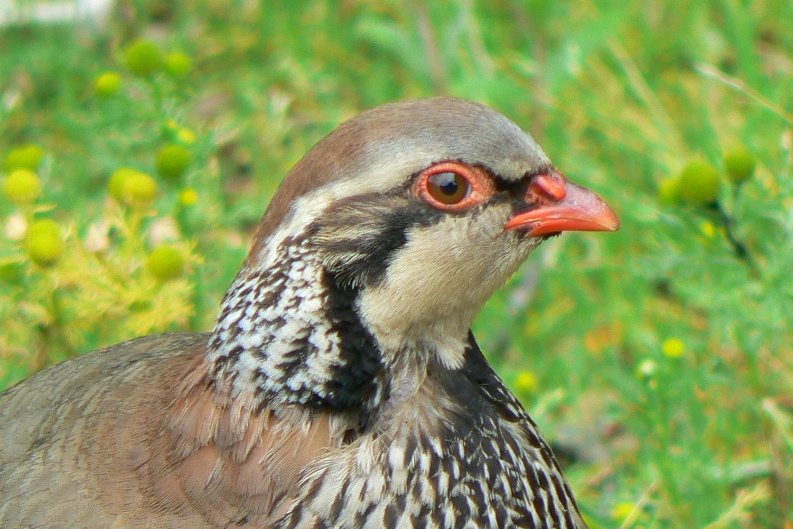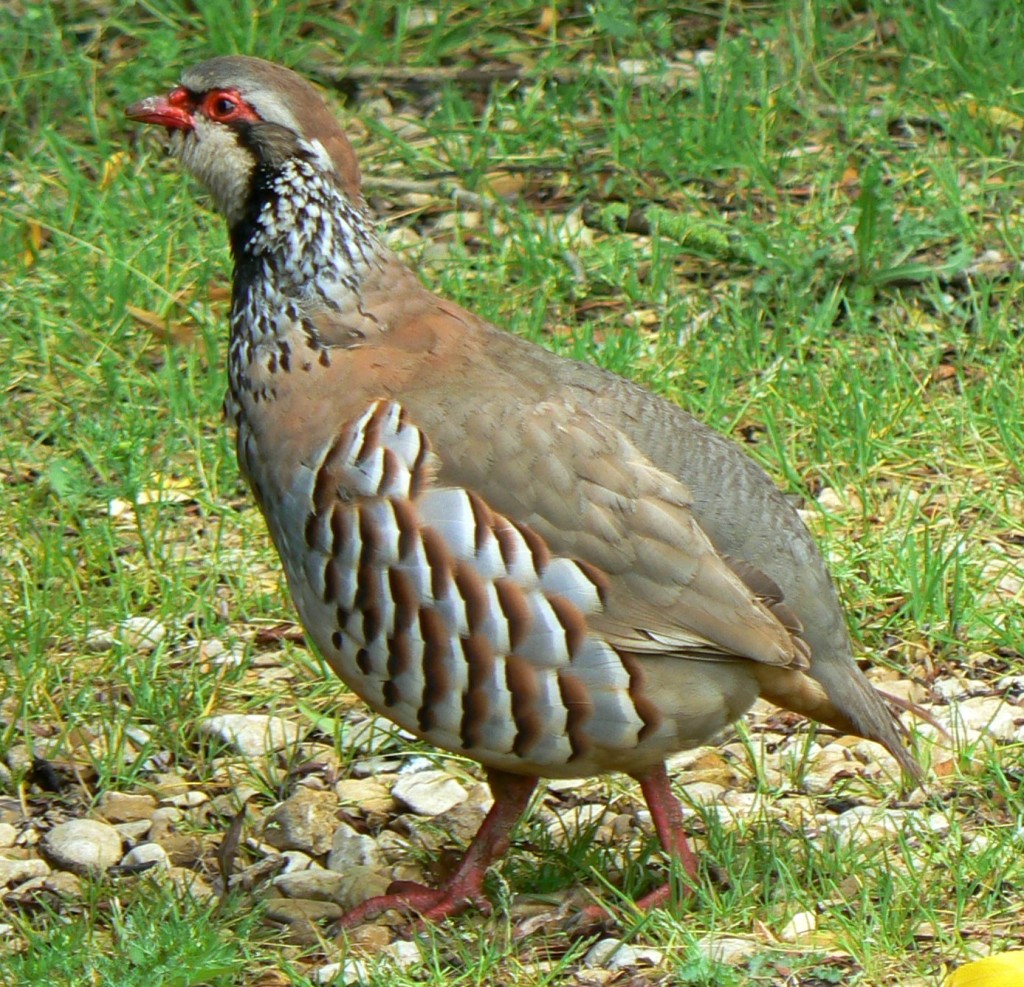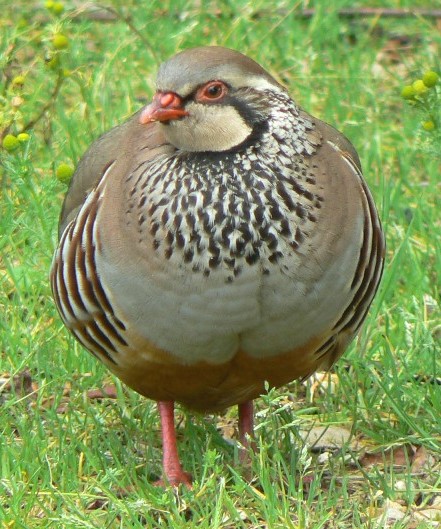
[015] Alectoris rufa, Red-legged Partridge
Introduction
Alectoris rufa, the Red-legged Partridge, is a game bird native to France and Spain but introduced to Britain for shooting and now naturalized. It is fairly common in open fields and has striking markings on its face and underparts. You probably wouldn’t notice its legs.
It is also known as the French Partridge.
Taxonomy
Kingdom – Animals
Phylum – Chordates
Class – Aves (Birds}
Order – Galliformes (Game birds)
Family – Phasianidae
Genus – Alectoris
Scientific Name – Alectoris rufa
Name
Partridge come through Middle English from the Latin ‘perdix,’ the name of the bird.
Alectoris is Ancient Greek for a farmyard chicken (also a member of Galliformes) and ‘rufa’ means red. There are seven Alectoris species, which look fairly similar, and all have red legs but it’s probably true that those of Alectoris rufa are slightly redder!
Game Birds
The order Galliformes consists of about 300 species of what we call game birds and all the ones we know come within the family Phasianidae – partridges, pheasant, peafowl, grouse, turkeys and the farmed bird we call a chicken. (It’s actually a domesticated Red Junglefowl from distant Asia.)
They are closely related to the birds that survived the mass extinction event that killed off most dinosaurs. (Taxonomists consider birds to be technically included within Dinosaurs.)
Game birds are heavy bodied, ground feeding birds and they rarely fly.
Description
What you notice about this bird is not its red legs. Unlike its relative the Grey Partridge, it has very obvious colourful barred markings on its flank. It also has a bright red bill and a similar coloured ring round its eyes with an almost pure white chin. Perhaps its visibility makes it an easier target to shoot.


Habitat and use
The Red-legged Partridge was introduced into Britain in the Eighteenth Century and has now replaced the Grey Partridge as a target for shooting. This means that they are bred in large numbers and released every year. The numbers bred are always more than can be shot and some survive to breed in the wild and establish a natural population.
Other Notes
Their nests are just scrapes in open grassland and they might find it hard to survive without the help of the gaming community and the annual replenishment of their numbers. Populations of wild partridges are generally in decline everywhere.

See also
I have to mention Perdix perdix, the Grey Partridge or English Partridge, native to most of Eurasia, which used to be common and used to be a familiar game bird. As its name suggests it is not as colourful as the Red-legged Partridge but it looks very similar in shape.
It is no longer a target for shooting, modern farming has destroyed much of its habitat, and it is a threatened species in Britain.
